Talk with our local travel specialist who can help organize your trip.
Top 10 Reasons To Visit Bhutan - A Mysterious Country In The Himalayas
Considering Bhutan as Your next bucklist destination? Here are top 10 reasons to visit bhutan
Bhutan is a small and mysterious country nestled in the Himalayas. The country is famous as the last Shangri-La due to its unparalleled beauty. Bask in the grandeur of Bhutan’s architecture and the iconic Tiger’s Nest shouldn’t be missed. Immerse in the spiritual vibe of Bhutan and take it a notch higher with meditation classes. Secluded country by choice, Bhutan is protective of its age-old rich culture and tradition. Visit the country fabled with flying tiger along with magic and dragons where you will find the least influence from the outside world.
Even a drive in the winding roads of Bhutan is scenic. Bhutan covered in greenery isn’t a miracle but a conscious effort! Global warming is a burning issue. Let’s find out how an environmentally progressive nation, Bhutan is setting examples in the world?
Table of Content
#1. World’s Only Carbon Negative Country
Environmentally conscious Bhutan is the only carbon negative country in the world
Breathe in the clean and fresh air unlike any country in the world!
Carbon dioxide is one of the greenhouse gasses which are produced by human activities that adversely affect climate change. When a country produces more carbon dioxide than it can absorb; it is accelerating global warming. Bhutan emerged as a carbon-negative country when many countries are struggling to lessen their greenhouse gas emission. Bhutan annually produces around 1.5 million tons of carbon and absorbs around 6 million tons of carbon.
You will be surrounded by greenery when visiting Bhutan; it is not a miracle but a conscious effort to preserve the environment. Let’s find out how the country achieved such a feat! Bhutan formulated and practiced strict laws to protect its forest. Bhutan's constitution requires at least 60% of the country to be covered by forest and the latest report shows that 72% of Bhutan is under forest cover. Moreover, it encourages afforestation and holds a Guinness World Record of planting 49,672 trees in June 2015.
Bhutan generates hydro-electricity from the fast-flowing rivers. It provides free electricity to farmers in rural areas to reduce firewood use and exports a large amount of electricity to India. The use of renewable resources over non-renewable petroleum products or nuclear power plant reduces carbon emission. Using electrical public transportation and encouraging electric vehicles by lowering rates is a step forward in decreasing carbon emission.
#2. Destination off-the-beaten Path
Travel to the exotic country Bhutan also known as the last Buddhist Kingdom
Bhutan recently opened for tourists so it remains as an off-the-beaten-path destination for many people. The Himalayan country is also called the last Buddhist Kingdom and even referred to as Shangri-La due to its unparalleled beauty. In the year 1974, Bhutan welcomed tourists for the first time and around 300 tourists visited in the same year.
Being well-aware of the impact of tourism on its culture and tradition, Bhutan came up with a policy. Bhutan tourism policy is called the High-Value Low Impact Tourism policy and aims to promote and preserve its unique identity. The tourism policy brings more foreign currency with minimum impact as it curbs down the high influx of tourists. It is compulsory to book a package with a registered travel operator to obtain a Bhutan visa. A tourist in Bhutan needs to pay a daily tariff rate of USD 250 in high season and USD 200 in the low season except for the citizens of India, Bangladesh, and the Maldives. The months of March, April, May, September, October, and November are called high season and the rest of the months are low season.
The daily tariff rate includes accommodation, food, the salary of a guide and a driver, and a part of which goes to Bhutan's development fund. Inclusions make daily tariff rates not that expensive as it appears on learning for the first time.
#3. Iconic Tiger’s Nest Monastery
Tiger’s Nest - the holiest place in Bhutan for the Buddhist pilgrims
If you visit Bhutan, then the iconic Tiger’s Nest Monastery or Taktsang Monastery or Paro Taktsang is a must-visit destination. It is a sacred site for the Bhutanese where Guru Rinpoche credited for spreading Buddhism in Bhutan, meditated. As per legend, Guru Rinpoche flew on a tigress back to meditate in caves here.
Tiger’s Nest is an architectural delight reflecting the amazing craftsmanship of Bhutan. The monastery features 4 major temples. Every morning, monks mark the beginning of a new day by rotating a prayer wheel situated on the main shrine. The monastery's interior is as impressive as the exterior with a red and golden roof on white buildings. The Interior of the monastery comprises of a golden dome with golden idols lit by many butter lights. Also, a large statue of Tiger is kept in a hall with thousands of carved Buddhas into rocks. It is a way of showing gratitude towards the tigress that brought Guru Rinpoche to Bhutan.
It’s not uncommon to wonder how to reach Tiger’s Nest perched on a cliff. The monastery lies in isolation and is only accessible through mountainous trails. A few hours long hike with breathtaking scenery will take you to the monastery. Hiking at your own pace is the secret to enjoy the beauty of the trail. On your way, the view of Tiger’s Nest plays hide and seek. You will be walking on the trail with Pine trees and colorful prayer flags.
Riding on ponies will reduce the hiking distance but it will only take you halfway after that you need to walk. Are you up for some more hiking in the lush green hills of Bhutan? If ‘Yes’; then the combination of two days hiking from Paro to Tiger’s Nest via Bumdra Monastery is perfect. There is no better way to enjoy the verdant hills of Bhutan than hiking.
Where to travel next?
Get help from our travel specialists for holiday ideas that matches your interests.
#4. An Unforgettable Spiritual Experience
Buddhist Prayer flags fluttering in the wind are found almost everywhere.
You will find Buddhism's presence in every aspect of Bhutan, where Vajrayana Buddhism is the state religion. Bhutan is decorated with many monasteries, dzongs, chortens, prayer wheels and prayer flags that symbolize Buddhism. The Giant statue of Buddha 51.5 meters high called Buddha Dordema is situated in Bhutan's capital city, Thimphu. Also, the complex of Buddha Dordema features 25,000 statues of 12-inch Buddha and 100,000 statues of 8-inch Buddha.
Bhutan believes in preserving and promoting the spiritual practice of Buddhism. The government also supports the practice of Buddhism financially and Buddhist monasteries, monks, nuns, and shrine get annual subsidies.
Meditation is an indispensable part of the practice of Buddhism. Tourists seeking meditational retreats are welcomed. You will find hermitages and small retreat centers throughout Bhutan and usually meditational centers are near monasteries, temples, and monastic schools. Meditation and retreat programs can be as short as a day and you can extend as per your requirement.
#5. Unique Tshechus | Festivals
Witness the exuberance of locals during Tsechus and their energy and excitement are infectious. The Festival of Bhutan reflects their devotion towards their religion. Tsechu means a religious festival held on the 10th day of a lunar month corresponding to the birthday of the Buddhist leader Guru Padmasambhava or Guru Rimpoche. Moreover, Guru Padmasambhava is credited for spreading Buddhism in Bhutan. The exact time of celebration of Tsechu in monasteries, dzongs, and temples differ thought out the country.
Grandly celebrated tshechus feature mask dances and several other modes of entertainment bringing together communities. Those who see tshechus are believed to receive blessings and also their sins are washed away. Performances during a tshechu have a special meaning or depict a story based on incidents dating as far as the 8th century from the time of Guru Padmasambhava. Among many tshechus celebrated in Bhutan two of the most popular festivals are Thimphu tshechu and Paro tshechu.
Thimphu Tshechu which is celebrated on the 10th day of the 8th month of the lunar calendar falls in September or October. You will see thousands of people dressed in traditional dress and jewelry on this festive occasion. The 3-day long tshechu features the chham or scared masked dance by monks dressed in silk robes and exotic mask. A collection of ancient chham performed includes the dance of eight manifestations of Padmasambhava, Stag's dance, and the Hounds and Dance of the cemetery lords.
Famous Paro Tshechu is a 5 days long celebration held inside the courtyard of Rinpung Dzong. Monks, as well as normal men, get ready in vibrant brocade costumes to perform mask dance. They perform scenes from legendary tales with historical anecdotes. The main highlight of the festival is the unveiling of 350 years old gigantic Thangkha of Guru Rinpoche.
#6. No-smoking Laws
Be careful before lighting up a cigarette in Bhutan; anti-smoking laws are strict here
Bhutan practices strict laws on anti-smoking and many restrictions are made to ensure the law's effective practice. It’s illegal to cultivate, harvest, produce, and sell tobacco and other products of tobacco in Bhutan. However, there isn’t a total ban on the consumption of tobacco products. An individual in Bhutan is allowed to import tobacco under a permissible limit for a specific period of time only for personal use. Cigarettes are imported to Bhutan for personal use basically from India which is subject to 200% duty. Further to control the budding black market of tobacco smuggling, there is a provision of 3 years prison if caught and found guilty.
If you want to smoke in Bhutan then you need to bring your own cigarettes. The permissible limit of cigarettes is 200 sticks, cigars are 30 pieces and alcohol spirit is 1 liter for a foreigner. Also, cigarettes are applicable to 100% customs duty as well as 100% sales tax. You are supposed to declare the items that attract duties and pay accordingly at customs. If you think bringing your own cigarettes is expensive then lighting a smoke will be difficult too!
Public places are smoke-free zone and prohibition in public areas includes markets, hotels, restaurants, bars, movie theaters, playing fields, offices. However, there are few places designated for smoking in Bhutan. If you are a smoker then it will be hard to find a place that allows smoking. Your guide will be of big help in finding a smoking zone for you.
If you want to quit smoking then the visit to Bhutan might be a perfect time!
#7. Happiness Is a Priority "Gross National Happiness"
Bhutan introduced Gross National Happiness to the world in the year 1972
We are in the age of social media where one way or the other it controls our lives and even affects mentally. The ill-effects of social media include increasing self-esteem issues, sleep disorders and others eventually causing unhappiness. Detoxify yourself from social media fever by traveling to Bhutan and be ready to witness a Bhutanese lifestyle quite different from ours. Visit a country where happiness is given a priority.
When financial prosperity was the measure to determine the country's growth, Bhutan coined the concept of Gross National Happiness back in 1972. King Jigme Singye Wangchuck the 4th king of Bhutan emphasized the importance of Gross National Happiness (GNH) than Gross Domestic Product. The concept of Gross National Happiness takes a holistic approach towards progress and gives equal importance to the non-economical aspect of wellbeing.
The four pillars of Gross National Happiness are sustainable development, environmental conservation, good governance, and preservation and promotion of culture. Four pillars of Gross National Happiness are responsible for manifesting the nine domains of Gross National Happiness; namely- education, the standard of living, psychological well being, health, good governance, cultural resilience and promotion, community vitality, environment, and use of time.
#8 Highest Unclimbed Mountains
Mountain are scared sites where gods and spirits dwell so climbing mountains are banned
The highest unclimbed mountain in the world lies in Bhutan, which is also the world's 40th highest mountain. The mountain is called Gangkhar Puensum and is 7570 meters or 24,836 feet high. Gangkhar Puensum means ‘White Peak of the 3 Spiritual Brothers.’ The mountain is situated on the border of Bhutan and China.
Now let’s find out why it remains unclimbed? Is it so difficult to climb that no one could climb or there are some other reasons?
Bhutan welcomed climbers for mountaineering in 1983. Unsuccessful attempts on climbing Gangkhar Puensum was made in 1985 and 1986. Moreover, there weren’t any rescue operations in the region for problems like altitude sickness, avalanches, and fatal injuries due to falls.
Mountains are considered sacred in Bhutan and it is believed that gods and spirits dwell there. Imposing a ban on mountaineering by the government was the way of showing respect to the local belief. Since 1994, there is a ban on climbing mountains higher than 6,000 meters. Moreover, Bhutan has prohibited mountaineering completely since 2003. The current scenario suggests that Gangkhar Puensum will continue to remain unclimbed.
Mountains are forbidden to climb but trekking in Bhutan is allowed through trails passing dense forest.
Where to travel next?
Get help from our travel specialists for holiday ideas that matches your interests.
#9. Trekker’s Paradise
The best way to enjoy the verdant hills of Bhutan is via trekking
There cannot be a better way to enjoy the greenery of Bhutan than trekking. Pass through the lush green forest, breathe in the fresh air, and devour the sight of verdant hills and picturesque mountains. Take some time away from the stressful and chaotic city life to enjoy trekking in solitary. You will realize the healing power of nature only when you let yourself loose in the beauty of nature.
You will experience the camping style of trekking in Bhutan. A trekking crew will accompany you and take care of food and accommodation. Camps are usually set up against a scenic backdrop and you will be waking up to mesmerizing views. You will be sleeping in tents made by your trekking crew and eating locally grown food freshly prepared by your cook.
There are various grades of trekking trails to suit your trekking style. Druk Path Trek in Bhutan is best for beginners. The trek starts from Paro and ends in Thimphu. The trek will reward you with the stunning views of the world’s highest unclimbed mountain Mount Gangkar Puensum. If you are a novice trekker then Punakha Winter Trek is also a good option. Punakha Winter Trek starts from Thimphu, passes through lush green valleys and dense forest, yellow rice fields before ending in Punakha valley. You will get to bask in the gorgeous views of Sinchula Pass and Phajoding Monastery.
If you have previous trekking experience then you can opt for the moderately challenging Jholmolhari Trek. Get ready to be rewarded with the amazing views of Mount Jomolhari on this trek. Dagala Thousand Lakes Trek falls under the choice of intrepid trekkers. Savor one of the most beautiful alpine lakes in the world along with some highest mountains in the world including Mount Everest and Mount Kangchenjunga of Nepal.
If you are an avid trekker and up for some challenges in Bhutan then Snowman trek will be perfect for you. You will begin your trek from Paro and end in Lunana passing the border between Bhutan and Tibet. During your Snowman Trek, you will be crossing over 11 high passes over 16,000 feet.
#10. Authentic Bhutanese Food
You must try scrumptious Bhutanese delicacies when in Bhutan
Bhutanese cuisine is characterized by spiciness from chilies. Dishes are spiced down to suit the foreign palate but it still could be spicy for you. Generally, rice is eaten with one or two other dishes which could be either meat or vegetables. Rice in Bhutan is red which is more nutritious than brown rice. The red rice becomes pale pink, soft and a little sticky when cooked.
The most popular Bhutanese dish is Ema Datshi. Local cheese mixed with spicy chilies is Ema Datshi. If you are skeptical about chilies in Ema Datshi then you can try Kewa Datshi which uses potatoes instead of chilies. Else, there is an option of Shamu Datshi with mushroom and cheese rather than chilies. You can find variations of this popular dish all over Bhutan.
Try Momos which is basically a steamed delicacy of vegetables or meat wrapped in flour sheets. Enjoy Jasha Maroo- a diced chicken with fresh ingredients like onion, tomato, garlic, ginger, chilies, and coriander leaves usually served with rice. If you are a meat lover then you can find dishes with chicken, pork, beef, yak and lamb.
Ditch your regular morning coffee for Sura or Suuchaa- a butter tea. Salty thick butter tea is loved by many. If you are searching for a fast-food restaurant in Bhutan then get ready to be disappointed. There are no international fast food restaurant chains in Bhutan. Instead, take this as an opportunity to explore the authentic and unique food of Bhutan that you are less likely to get anywhere else in the world.
Plan Your Holiday With A Trustworthy Company
Embark on an unforgettable experience of the visit to Bhutan with Third Rock Adventures. Travel to Bhutan will definitely be a memory to cherish lifelong. Make most of your Bhutan travel and leave the trouble of making arrangements to the team which has experience of many years. Also, the tourism policy of Bhutan requires you to travel with a registered tour operator who can arrange visa, accommodation and other necessities for you.
Extra caution is required while choosing a travel company or tour operator in Bhutan. A knowledgeable and experienced guide will enrich your experience as you try to understand Bhutan’s unique culture and tradition. We offer different travel packages in Bhutan like Bhutan Cultural Tour and heritage tour of Bhutan. Combine your Bhutan tour with Nepal to enjoy tours of two Himalayan countries connected by the thread of Buddhism.
- Written by: Anjali Kansakar
Updated: Sep, 15, 2019

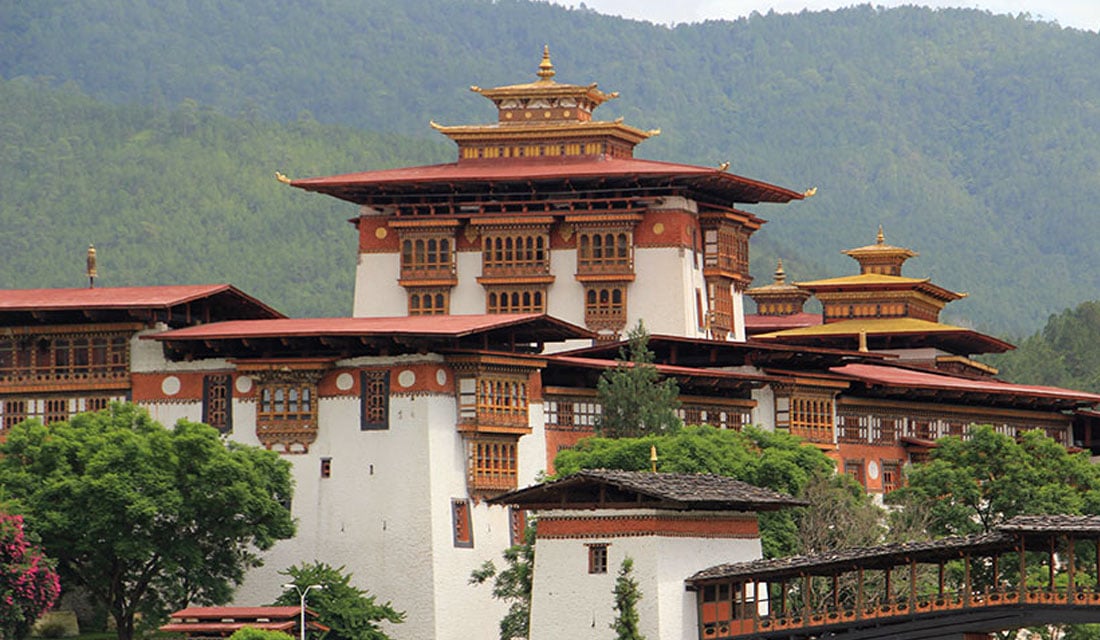










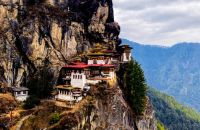
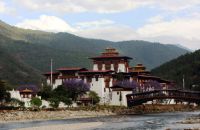
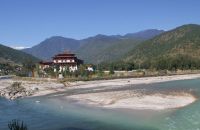

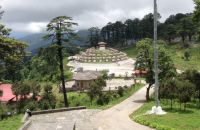
















Recent Comments